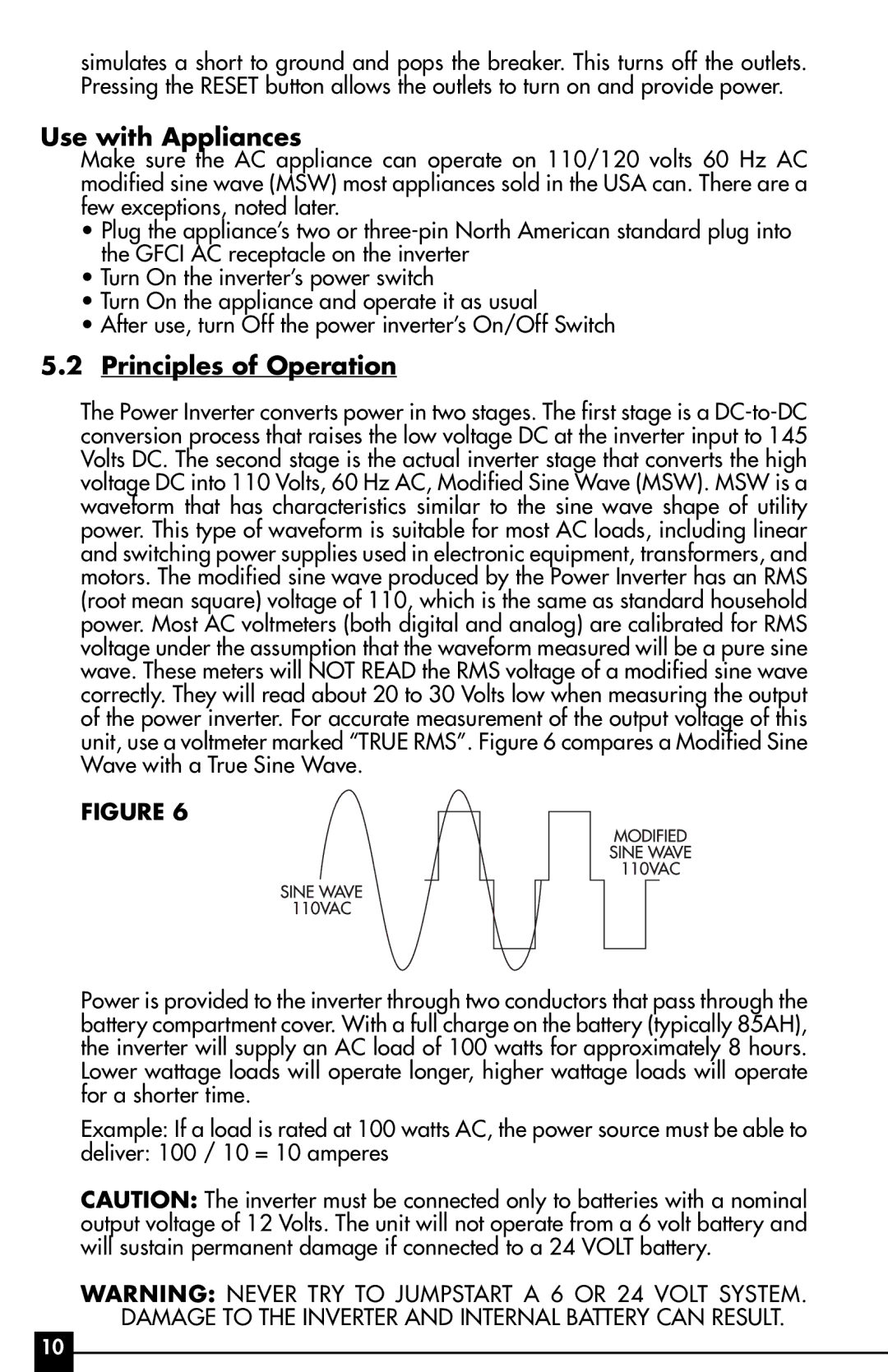
simulates a short to ground and pops the breaker. This turns off the outlets. Pressing the RESET button allows the outlets to turn on and provide power.
Use with Appliances
Make sure the AC appliance can operate on 110/120 volts 60 Hz AC modified sine wave (MSW) most appliances sold in the USA can. There are a few exceptions, noted later.
¥Plug the applianceÕs two or
¥Turn On the inverterÕs power switch
¥Turn On the appliance and operate it as usual
¥After use, turn Off the power inverterÕs On/Off Switch
5.2Principles of Operation
The Power Inverter converts power in two stages. The first stage is a
FIGURE 6
Power is provided to the inverter through two conductors that pass through the battery compartment cover. With a full charge on the battery (typically 85AH), the inverter will supply an AC load of 100 watts for approximately 8 hours. Lower wattage loads will operate longer, higher wattage loads will operate for a shorter time.
Example: If a load is rated at 100 watts AC, the power source must be able to
deliver: 100 / 10 = 10 amperes
CAUTION: The inverter must be connected only to batteries with a nominal output voltage of 12 Volts. The unit will not operate from a 6 volt battery and will sustain permanent damage if connected to a 24 VOLT battery.
WARNING: NEVER TRY TO JUMPSTART A 6 OR 24 VOLT SYSTEM. DAMAGE TO THE INVERTER AND INTERNAL BATTERY CAN RESULT.
10
